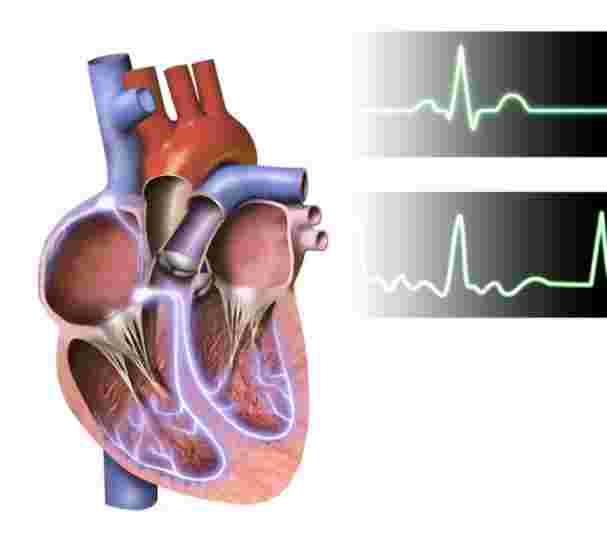The global atrial fibrillation (Afib) Market is witnessing significant momentum as rising cardiovascular disease prevalence, an aging population, and technological advancements drive demand for innovative treatment solutions. With Afib being the most common sustained cardiac arrhythmia worldwide, healthcare systems and companies are increasingly prioritizing new therapies, devices, and digital solutions to address the condition’s clinical and economic burden.
Growing Prevalence of Atrial Fibrillation
Atrial fibrillation affects millions of people worldwide, with prevalence sharply rising among older adults. Risk factors such as hypertension, obesity, diabetes, and sedentary lifestyles further accelerate incidence rates. According to global health estimates, Afib cases are expected to more than double over the next two decades, significantly straining healthcare resources. The growing number of hospitalizations, stroke risks, and treatment complexities make Afib a major public health concern, and this directly supports the demand for effective medications, ablation devices, and monitoring solutions.
Treatment Landscape and Market Segmentation
The Afib market is broadly segmented into pharmacological therapies, catheter ablation, medical devices, and monitoring technologies.
-
Pharmacological Therapies: Anticoagulants and antiarrhythmic drugs remain the first-line treatment for many patients. Direct oral anticoagulants (DOACs) are increasingly replacing traditional warfarin due to fewer monitoring requirements and lower bleeding risks.
-
Catheter Ablation: A rapidly growing segment, catheter ablation has gained traction as a curative procedure for symptomatic patients who fail drug therapy. Advancements such as cryoablation and pulsed field ablation are improving outcomes and procedural safety.
-
Medical Devices: Implantable devices such as left atrial appendage (LAA) closure systems and pacemakers offer alternative treatment pathways for patients unsuitable for anticoagulants.
-
Digital and Remote Monitoring: Wearables and mobile-based ECG monitoring systems are revolutionizing early detection and patient management, providing real-time insights and reducing emergency hospitalization risks.
This multi-faceted treatment landscape highlights both the diversity and complexity of the Afib market, with each segment contributing significantly to overall revenue growth.
Technological Innovations Driving Growth
Technological progress has transformed how Afib is managed globally. The use of artificial intelligence (AI) and machine learning (ML) in arrhythmia detection is expanding through integration with consumer wearables and clinical diagnostic tools. Smartphone-based ECG devices and connected digital health platforms allow continuous monitoring, enabling proactive care and timely intervention.
Furthermore, advancements in ablation techniques, such as the introduction of pulsed field ablation (PFA), promise shorter procedures, fewer complications, and improved success rates. Robotic-assisted navigation systems are also enhancing precision and reducing physician fatigue during ablation procedures. These innovations are expected to create long-term market opportunities for both established players and emerging startups.
Regional Insights
-
North America remains the largest market due to high disease prevalence, advanced healthcare infrastructure, and early adoption of new technologies. Reimbursement support for ablation procedures and strong clinical research also strengthen market growth in the region.
-
Europe is witnessing robust growth driven by aging demographics, structured healthcare programs, and strong government support for cardiovascular disease management.
-
Asia-Pacific represents the fastest-growing regional market. Increasing healthcare expenditure, rising awareness, and improving access to advanced treatments are fueling demand. Countries like China and India are emerging as major hotspots due to their large patient base.
-
Latin America and Middle East & Africa are gradually adopting advanced Afib treatments, though market penetration is limited by healthcare affordability and access challenges.
Key Market Drivers
-
Rising Cardiovascular Disease Burden – Higher prevalence of lifestyle-related risk factors is fueling Afib cases.
-
Aging Global Population – Elderly individuals are more vulnerable, leading to increased demand for effective treatments.
-
Technological Advancements – Innovative ablation devices, digital health tools, and minimally invasive solutions are expanding treatment choices.
-
Shift Towards Outpatient Care – Remote monitoring and day-care procedures are reducing hospital stay costs and enhancing patient convenience.
-
Regulatory and Reimbursement Support – Favorable government policies and insurance coverage, especially in developed economies, are boosting adoption rates.
Challenges and Restraints
Despite strong growth drivers, the Afib market faces some limitations:
-
High Treatment Costs: Advanced ablation procedures and device implants remain expensive for patients in low- and middle-income regions.
-
Skilled Workforce Shortages: Performing ablation requires trained electrophysiologists, and demand often exceeds supply.
-
Complications and Risks: Certain procedures and long-term drug therapies carry risks, including bleeding and recurrence, which hinder patient compliance.
Addressing these challenges through training programs, cost-effective technologies, and patient education initiatives will be essential for sustained market expansion.
Future Outlook
The atrial fibrillation (Afib) market is poised for substantial growth, supported by rapid adoption of advanced therapies and the integration of digital health solutions. As AI-enabled monitoring tools, next-generation ablation systems, and novel drug therapies evolve, treatment success rates will improve, reducing the overall disease burden. Moreover, collaboration between pharmaceutical companies, medtech firms, and digital health startups will create a comprehensive ecosystem for Afib management.
By 2035, the Afib market is expected to be significantly larger, more technologically advanced, and more patient-centric. With rising global awareness, expanding healthcare access, and strong investment in research and development, the industry will continue to reshape the future of cardiovascular care.




